Salt cleaning hacks – who knew something so simple could be so powerful around the house? I’m always on the lookout for easy, affordable ways to keep my home sparkling, and let me tell you, salt has become my new best friend! From scrubbing stubborn stains to freshening up tired fabrics, this humble ingredient is a true multi-tasker.
Salt has been used for centuries, not just for flavoring food, but also for its incredible cleaning properties. Think back to ancient times – before fancy detergents, salt was a go-to for preserving food, disinfecting wounds, and, yes, even cleaning homes! Its natural abrasive and absorbent qualities make it a surprisingly effective cleaning agent.
In today’s busy world, who has time to spend hours scrubbing? That’s where these salt cleaning hacks come in. I’m going to share some of my favorite DIY tricks that will save you time, money, and a whole lot of elbow grease. Whether you’re battling burnt-on food in your pots and pans, trying to revive dull copper, or simply looking for a natural way to freshen up your space, these hacks are a game-changer. Get ready to discover the amazing cleaning power of salt!
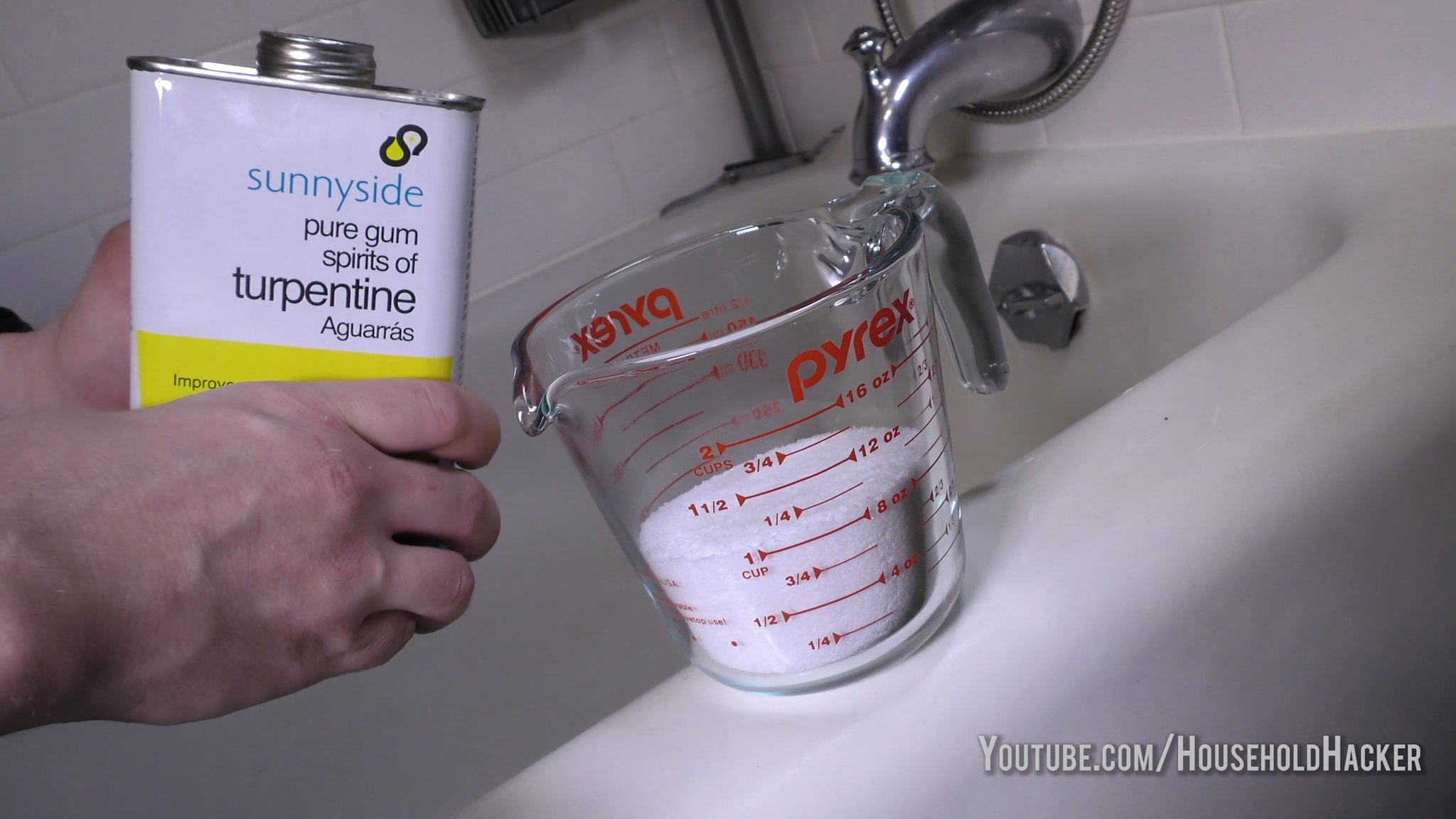
DIY Salt Cleaning Hacks: Unleash the Power of Sodium Chloride!
Hey there, fellow DIY enthusiasts! I’m always on the lookout for affordable and effective cleaning solutions, and guess what? I’ve discovered the magic of salt! Yes, that humble kitchen staple can do wonders around your house. Forget expensive cleaners loaded with chemicals; let’s dive into some amazing salt cleaning hacks that will save you money and keep your home sparkling.
Cleaning Cast Iron Like a Pro
Cast iron cookware is a kitchen essential, but cleaning it can be a real pain. Soap can strip away the seasoning, and scrubbing too hard can damage the surface. But fear not! Salt is here to save the day.
What you’ll need:
* Coarse salt (kosher or sea salt works best)
* A clean, dry cloth or sponge
* Vegetable oil or other cooking oil
* Paper towels
Step-by-step instructions:
1. Scrape off excess food: After cooking, use a spatula or scraper to remove any leftover food particles from your cast iron skillet while it’s still warm (but not hot enough to burn you!).
2. Add salt and scrub: Pour a generous amount of coarse salt into the skillet. Using your cloth or sponge, scrub the salt around the pan in a circular motion. The salt acts as a gentle abrasive, loosening stuck-on food without damaging the seasoning. I usually scrub for a minute or two, depending on how dirty the pan is.
3. Rinse (optional): If the pan is particularly greasy, you can rinse it briefly with hot water. However, try to avoid using soap unless absolutely necessary.
4. Dry thoroughly: This is crucial! Immediately dry the skillet with a clean cloth or paper towel. Any remaining moisture can lead to rust.
5. Season the pan: Pour a small amount of vegetable oil (about a teaspoon) into the skillet. Use a paper towel to rub the oil all over the inside and outside of the pan, including the handle. You want a very thin, even coat.
6. Heat the pan: Place the skillet in a preheated oven at 350°F (175°C) for about an hour. This will help the oil polymerize and create a protective layer. Alternatively, you can heat the skillet on the stovetop over medium heat until it starts to smoke slightly.
7. Cool and store: Let the skillet cool completely before storing it. Your cast iron is now clean, seasoned, and ready for its next culinary adventure!
Reviving Dull Copper
Copper pots, pans, and decorative items can add a touch of elegance to your home, but they tend to tarnish over time. Salt, combined with vinegar or lemon juice, can restore their shine.
What you’ll need:
* Salt
* White vinegar or lemon juice
* A soft cloth or sponge
* Water
Step-by-step instructions:
1. Make a paste: In a small bowl, mix equal parts salt and white vinegar (or lemon juice) to form a paste. I usually start with a tablespoon of each and adjust as needed.
2. Apply the paste: Using your cloth or sponge, apply the paste to the tarnished copper surface. Gently rub the paste in a circular motion. You’ll start to see the tarnish disappear almost immediately!
3. Rinse thoroughly: Once you’ve removed the tarnish, rinse the copper item thoroughly with water. Make sure to remove all traces of the salt and vinegar/lemon juice mixture.
4. Dry completely: Use a clean, dry cloth to dry the copper item completely. This will prevent water spots from forming.
5. Buff to a shine: For an extra shine, you can buff the copper with a clean, dry cloth. Your copper will look as good as new!
Cleaning Your Iron Like a Pro
A dirty iron can leave marks on your clothes and affect its performance. Salt can help remove residue and mineral buildup.
What you’ll need:
* Salt
* A clean cotton cloth or towel
* An iron
Step-by-step instructions:
1. Prepare the surface: Lay a clean cotton cloth or towel on your ironing board.
2. Sprinkle salt: Generously sprinkle a layer of salt onto the cloth.
3. Heat the iron: Turn your iron on to the highest setting, but make sure the steam function is turned off.
4. Iron the salt: Gently iron over the salt-covered cloth in a circular motion for a few minutes. The salt will help to loosen and remove any residue or buildup on the iron’s soleplate.
5. Wipe clean: Unplug the iron and let it cool down slightly. Then, use a clean, damp cloth to wipe away any remaining salt and residue from the soleplate.
6. Test the iron: Before ironing your clothes, test the iron on a scrap piece of fabric to make sure there is no salt residue left.
Unclogging Drains with Salt
A clogged drain is a common household problem. Before reaching for harsh chemical drain cleaners, try this simple salt solution.
What you’ll need:
* 1/2 cup salt
* Boiling water
Step-by-step instructions:
1. Pour in the salt: Carefully pour 1/2 cup of salt down the clogged drain.
2. Add boiling water: Slowly pour a kettle of boiling water down the drain after the salt.
3. Wait and flush: Let the mixture sit for about 20-30 minutes. The salt and hot water will help to break down grease and debris that are causing the clog.
4. Flush with hot water: After waiting, flush the drain with hot tap water for several minutes to clear away any remaining debris.
5. Repeat if necessary: If the drain is still clogged, repeat the process. For stubborn clogs, you can also try adding 1/2 cup of baking soda before the salt.
Cleaning Your Sink
Salt can be used to clean and deodorize your sink, leaving it fresh and sparkling.
What you’ll need:
* Salt
* Lemon halves (optional)
* Water
* A sponge or cloth
Step-by-step instructions:
1. Wet the sink: Wet the entire surface of your sink with water.
2. Sprinkle with salt: Generously sprinkle salt over the wet surface.
3. Scrub the sink: Use a sponge or cloth to scrub the sink, paying attention to any stains or grime. If you have lemon halves, you can use them to scrub the sink for added cleaning power and a fresh scent.
4. Rinse thoroughly: Rinse the sink thoroughly with water to remove all traces of salt.
5. Dry the sink: Dry the sink with a clean cloth to prevent water spots.
Cleaning Sponges and Dishcloths
Sponges and dishcloths can harbor bacteria and odors. Soaking them in a salt solution can help to disinfect and freshen them.
What you’ll need:
* 1/4 cup salt
* Warm water
* A bowl or container
Step-by-step instructions:
1. Prepare the salt solution: Fill a bowl or container with warm water and dissolve 1/4 cup of salt in it.
2. Soak the sponges and dishcloths: Place the sponges and dishcloths in the salt solution, making sure they are fully submerged.
3. Soak for several hours: Let the sponges and dishcloths soak in the salt solution for at least several hours, or even overnight.
4. Rinse and dry: After soaking, rinse the sponges and dishcloths thoroughly with clean water and squeeze out any excess water. Allow them to air dry completely.
Removing Water Rings from Wood Furniture
Those pesky water rings on your wood furniture can be a real eyesore. Salt can help to draw out the moisture and restore the finish.
What you’ll need:
* Salt
* Olive oil
* A soft cloth
Step-by-step instructions:
1. Make a paste: Mix equal parts salt and olive oil to form a paste.
2. Apply the paste: Gently apply the paste to the water ring on your wood furniture.
3. Rub gently: Rub the paste in a circular motion for a few minutes. Be careful not to scratch the finish.
4. Wipe clean: Wipe away the paste with a clean, soft cloth.
5. Buff to a shine: Buff the area with a clean, dry cloth to restore the shine.
Cleaning Your Cutting Board
Cutting boards, especially wooden ones, can absorb odors and bacteria. Salt can help to clean and deodorize them.
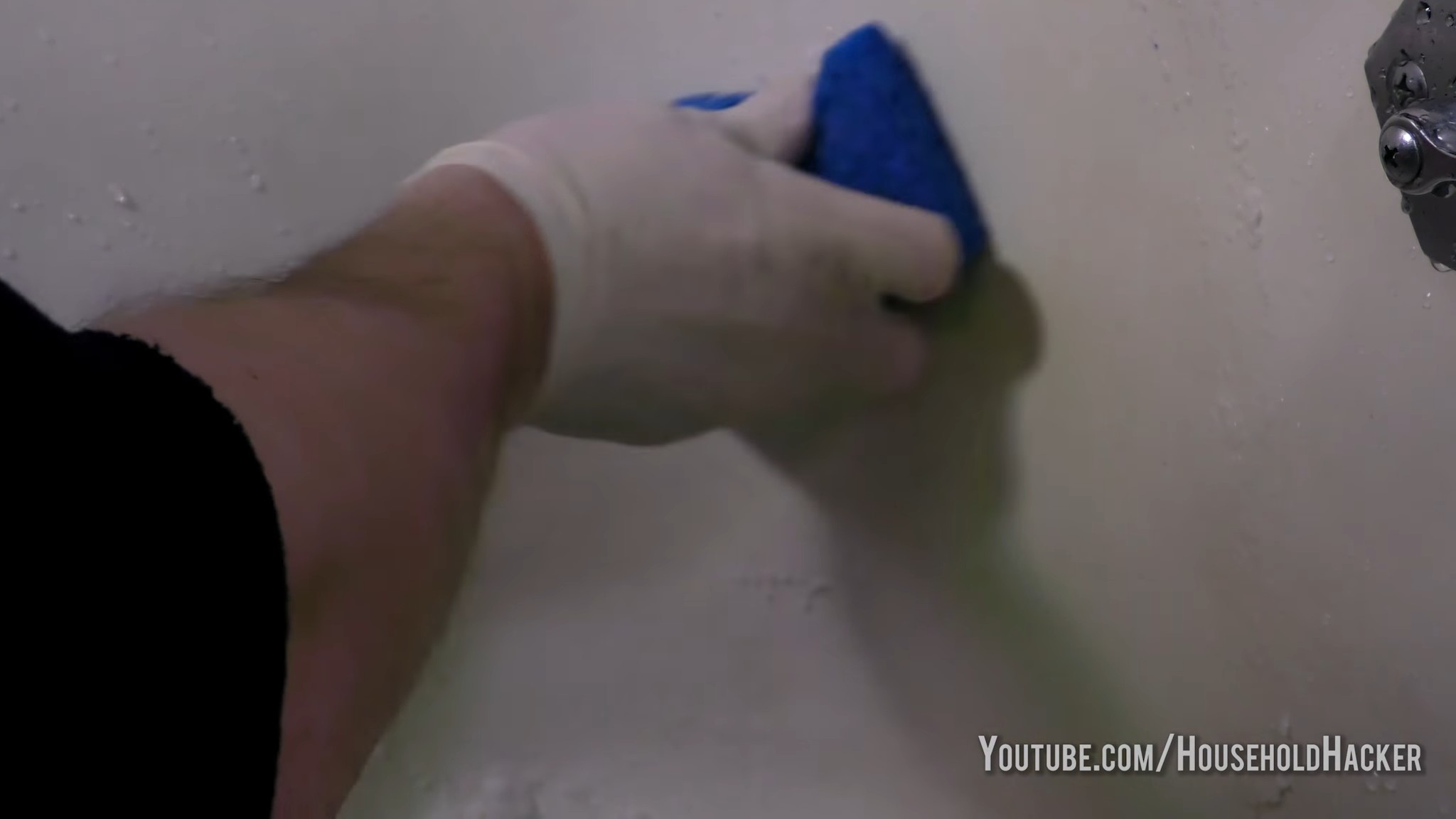
Conclusion
So, there you have it! This simple yet incredibly effective salt cleaning hack is a game-changer for anyone looking to simplify their cleaning routine and achieve sparkling results without harsh chemicals. We’ve explored how readily available salt, a humble ingredient often overlooked, can become your secret weapon against grime, stains, and odors throughout your home. From reviving dull copper pots to scrubbing stubborn bathtub rings, the versatility of salt as a cleaning agent is truly remarkable.
Why is this DIY trick a must-try? Because it’s economical, eco-friendly, and surprisingly powerful. Forget expensive, chemical-laden cleaners that can irritate your skin and pollute your home. Salt is a natural abrasive and disinfectant, making it a safe and effective alternative for a wide range of cleaning tasks. Plus, you probably already have it in your pantry!
But the benefits don’t stop there. This salt cleaning hack is also incredibly adaptable.
Variations and Suggestions:
* Scent Boost: Infuse your salt scrub with a few drops of your favorite essential oil for a refreshing aroma. Lemon, lavender, and tea tree oil are excellent choices for their cleaning and antibacterial properties.
* Texture Control: Adjust the coarseness of the salt depending on the surface you’re cleaning. Fine table salt is ideal for delicate surfaces, while coarser sea salt is better for tougher grime.
* Vinegar Power: Combine salt with white vinegar to create a potent cleaning paste for tackling stubborn stains and mildew. Be sure to test this mixture on an inconspicuous area first, especially on delicate surfaces.
* Lemon Juice Brightener: Mix salt with lemon juice for a natural bleaching effect on stained surfaces like cutting boards or grout. The citric acid in lemon juice enhances the cleaning power of the salt.
* Olive Oil Polish: Create a gentle polishing paste by combining salt with olive oil. This mixture is perfect for restoring shine to wooden furniture or stainless steel appliances.
We’re confident that once you experience the cleaning power of salt, you’ll be hooked. It’s a simple, sustainable, and satisfying way to keep your home clean and fresh.
Now, it’s your turn! We encourage you to try this salt cleaning hack and discover its amazing benefits for yourself. Experiment with different variations, find what works best for your needs, and most importantly, share your experience with us! Let us know in the comments below how you’re using salt to clean your home and any tips or tricks you’ve discovered along the way. Your insights could help others discover the magic of salt cleaning too!
Don’t hesitate to adapt this salt cleaning hack to your specific needs and preferences. The possibilities are endless! So, grab a box of salt and get ready to experience the cleaning power of nature. You’ll be amazed at the results!
Frequently Asked Questions (FAQs)
Q: Is salt safe to use on all surfaces?
A: While salt is generally safe for most surfaces, it’s always a good idea to test it on an inconspicuous area first, especially on delicate materials like polished wood, painted surfaces, or certain types of metal. The abrasive nature of salt could potentially scratch or damage these surfaces if used improperly. Avoid using coarse salt on easily scratched surfaces. For delicate surfaces, opt for fine table salt and use a gentle touch.
Q: Can I use any type of salt for cleaning?
A: Yes, you can use various types of salt for cleaning, but the best choice depends on the specific task. Table salt is a good all-purpose option for general cleaning. Sea salt, with its coarser texture, is ideal for scrubbing tough grime and stains. Epsom salt, known for its therapeutic properties, can be used in cleaning solutions for its mild abrasive and deodorizing qualities. Kosher salt is another good option for scrubbing.
Q: How do I clean a burnt pot with salt?
A: To clean a burnt pot with salt, first, remove any loose debris. Then, pour a generous amount of salt into the pot and add enough water to cover the burnt areas. Bring the mixture to a boil and let it simmer for about 15-20 minutes. The salt will help loosen the burnt food particles. After simmering, let the pot cool slightly and then scrub the burnt areas with a non-abrasive sponge or brush. For stubborn burns, you can create a paste of salt and water and apply it directly to the burnt areas before scrubbing.
Q: Can salt be used to remove stains from clothing?
A: Yes, salt can be effective in removing certain types of stains from clothing. For fresh stains, immediately cover the stain with a generous amount of salt to absorb the liquid. Let the salt sit for several minutes, then brush it off and launder the garment as usual. For tougher stains, you can create a paste of salt and water or salt and lemon juice and apply it to the stain before washing. Salt is particularly effective on blood, grease, and wine stains. However, always test the salt solution on an inconspicuous area of the fabric first to ensure it doesn’t cause discoloration.
Q: How can I use salt to clean my bathroom?
A: Salt is a versatile cleaner for bathrooms. You can use it to scrub soap scum and mildew from shower tiles and grout. Create a paste of salt and water or salt and baking soda and apply it to the affected areas. Let it sit for a few minutes, then scrub with a brush or sponge and rinse thoroughly. Salt can also be used to clean bathtubs and sinks. Sprinkle salt onto a damp sponge and scrub the surfaces to remove grime and stains. For toilet bowl cleaning, pour a cup of salt into the bowl and let it sit for a few hours or overnight before flushing.
Q: Is salt an effective disinfectant?
A: While salt does possess some antibacterial properties, it’s not as potent as dedicated disinfectants like bleach or hydrogen peroxide. Salt can help inhibit the growth of bacteria and fungi, making it a useful addition to cleaning solutions. However, for situations requiring thorough disinfection, such as cleaning surfaces contaminated with harmful pathogens, it’s best to use a stronger disinfectant. Salt is more effective as a cleaning agent for removing dirt, grime, and odors.
Q: Can I use salt to deodorize my refrigerator?
A: Yes, salt can be used to deodorize your refrigerator. Place a small bowl of salt in the refrigerator to absorb odors. Replace the salt every few weeks or as needed. You can also create a cleaning solution of salt and water to wipe down the interior of your refrigerator. This will help remove spills and food residue while also neutralizing odors.
Q: How do I clean my cast iron skillet with salt?
A: Salt is an excellent choice for cleaning cast iron skillets. After cooking, while the skillet is still warm, pour a generous amount of coarse salt into the pan. Use a dry cloth or paper towel to scrub the salt around the skillet, removing any food residue. The salt acts as a gentle abrasive without damaging the seasoning of the cast iron. Once the skillet is clean, rinse it with hot water and dry it thoroughly. You may need to re-season the skillet occasionally to maintain its non-stick surface.
Q: Can salt damage my plumbing?
A: No, salt is unlikely to damage your plumbing when used in cleaning solutions. Salt is a natural mineral and doesn’t corrode or harm pipes. However, avoid pouring large amounts of undissolved salt directly down the drain, as it could potentially cause a clog. Always dissolve salt in water before using it for cleaning purposes.
Q: How often should I use salt for cleaning?
A: The frequency of using salt for cleaning depends on your specific needs and the areas you’re cleaning. For daily tasks like wiping down countertops or cleaning spills, you can use salt solutions as needed. For more intensive cleaning tasks like scrubbing bathrooms or cleaning burnt pots, you can use salt once or twice a week. Adjust the frequency based on the level of dirt and grime in your home.

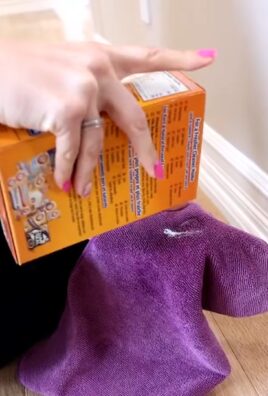
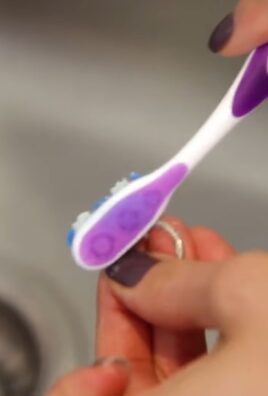
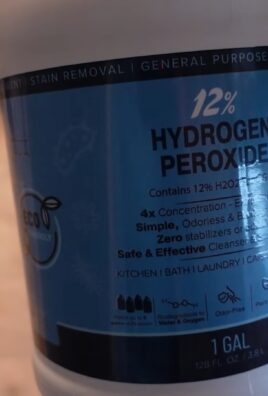
Leave a Comment